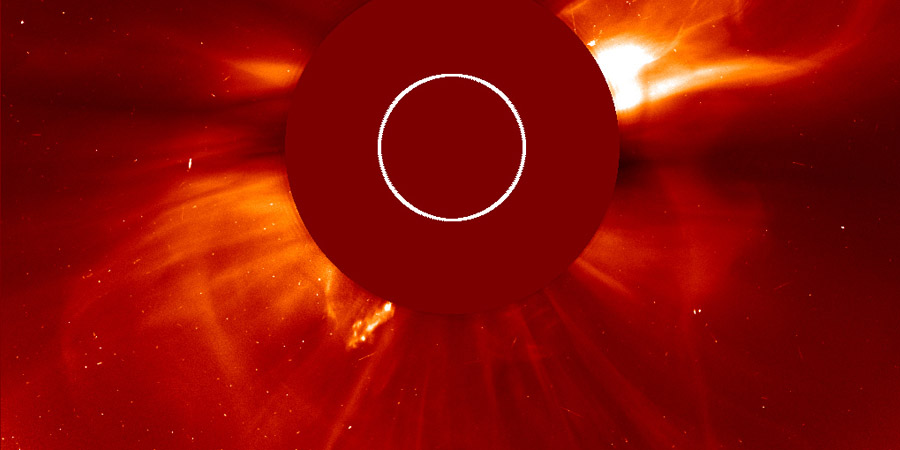CME impact expected, G3 storm watch
Friday, 29 October 2021 13:53 UTC

What a day yesterday. The spectacular X1.0 solar flare (which is the second strongest solar flare of the current Solar Cycle thus far) launched a magnificent coronal mass ejection into space. Sunspot region 2887 was in a perfect earth-facing position at the time of the eruption and it was no secret that the cloud of solar plasma would have an earth-directed component. What could we expect for the coming Halloween weekend? Stay tuned!
We finally have all the data we need to come to a conclusion as to what to expect of the coronal mass ejection launched by the X1.0 solar flare. The coronagraph imagery from SOHO/LASCO shows us a dense partial halo coronal mass ejection with the bulk of the ejecta heading south of our planet. We do however think that a significant portion of the cloud is going to impact our planet's magnetic field and we should see a very clear impact signature when the cloud passes the DSCOVR spacecraft at the Sun-Earth L1 point. The big question mark however is... when is the plasma cloud going to arrive?
The experts at the European SIDC and the American NOAA SWPC are in disagreement here... by quite a margin. The NOAA SWPC expects an early impact time around 16 UTC on Saturday, 30 October which means it would take the plasma cloud about two full 2 days to bridge the gap between Sun and Earth. The SIDC reports that the plasma cloud was launched at a speed of 800km/s as measured with STEREO COR2 and they have an impact window during the early hours of Sunday, 31 October. An impact time late 30 October or early 31 October seems to be the most realistic scenario right now.
Nonetheless, stay alert tomorrow and even on Sunday as this has the potential to become the strongest geomagnetic storm of the current Solar Cycle thus far. Everyone seems to be in agreement that the potential is there for strong G3 geomagnetic storm conditions which in theory could make aurora visible from locations like northern Germany, the Netherlands and most of England. In the USA, aurora might become visible from locations like Denver, CO and Richmond, VA. Melbourne and Wellington could get a piece of the cake in the southern hemisphere.
Another look at the X1 solar flare and the resulting CME as seen by SOHO/LASCO. A partial halo CME was launched with a clear earth-directed component. Impact expected late 30 October/early 31 October. Strong G3 geomagnetic storm possible this Halloween weekend! pic.twitter.com/lFNI0FwISe
— SpaceWeatherLive (@_SpaceWeather_) October 29, 2021
A look at @NWSSWPC ENLIL solar wind model showing the coronal mass ejection launched by yesterday's X1 solar flare.
— SpaceWeatherLive (@_SpaceWeather_) October 29, 2021
They predict the plasma cloud to impact our planet around 16 UTC tomorrow. A strong (G3-Kp7) geomagnetic storm watch is in effect. pic.twitter.com/rFHEPV8ytg
Thank you for reading this article! Did you have any trouble with the technical terms used in this article? Our help section is the place to be where you can find in-depth articles, a FAQ and a list with common abbreviations. Still puzzled? Just post on our forum where we will help you the best we can!
Latest news
Latest forum messages
Support SpaceWeatherLive.com!
A lot of people come to SpaceWeatherLive to follow the Sun's activity or if there is aurora to be seen, but with more traffic comes higher server costs. Consider a donation if you enjoy SpaceWeatherLive so we can keep the website online!

Space weather facts
| Last X-flare | 2025/03/28 | X1.1 |
| Last M-flare | 2025/04/30 | M2.03 |
| Last geomagnetic storm | 2025/04/21 | Kp5+ (G1) |
| Spotless days | |
|---|---|
| Last spotless day | 2022/06/08 |
| Monthly mean Sunspot Number | |
|---|---|
| March 2025 | 134.2 -20.4 |
| Last 30 days | 123.3 -5.8 |


